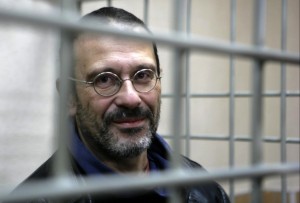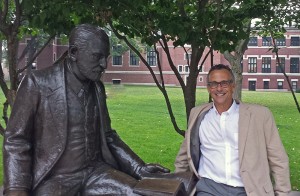In Sunday’s Washington Post I published a review of a new book on forgetting by Lewis Hyde. For many years, I was very engaged with memory studies, and my own area of interest was in memory abnormalities. I was focused on diseases of memory, especially as they were understood in 19th century Europe: amnesia, nostalgia, hysteria. I published related essays on these topics in The Ironist’s Cage:Memory, Trauma and the Construction of History (1995) and Memory, Trauma and History: Essays on Living with the Past (2011).
Lewis Hyde will be visiting Wesleyan’s Center for the Arts in November. He’s a fascinating thinker — whether you’re interested in neuroscience, politics, the arts, or just in how to make sense of the past.
How much memory do you want? asks the salesperson at the technology store. Watching the evening news, I see commercials for a pill that will enhance my memory almost as often as I see ads for another pill that will regulate my mood. I wonder if one medication counteracts the other. We live in a culture that seems to prize memory, even as it gives us technological tools to eliminate our need for it. I can ask my phone for most bits of information that I have trouble bringing to mind, and if I forget where I left my phone, my iPad can remind me.
Still, memory remains a subject of reflection and anxiety — not least because as people live longer, more of them are surviving without connections to their past. The destruction of memory caused by Alzheimer’s disease is often experienced as a destruction of the self. It can be terrifying to those who suffer from it and seem like the ultimate cruelty to loved ones who are no longer recognized. In “A Primer for Forgetting,” Lewis Hyde doesn’t ignore the pain of involuntary amnesia, but he is much more interested in the liberating aspects of “getting past the past,” as his subtitle puts it.
His book is organized loosely — it’s made up of four notebooks of aphorisms and reflections on a wide variety of sources that discuss what it means to lose the past. When you turn your attention to forgetting, does that mean you are in fact remembering? This question runs through Hyde’s beautiful prose like a bright red thread, or perhaps a string tied around your finger. He wants readers to acknowledge how sweet it can be to get free of one’s memories — free of the baggage attached to the self. The weight of the past can lock us into repetition; it can also instigate a desire to set the past right, to correct or avenge misdeeds. “The tree of memory set its roots in blood,” Hyde emphasizes, and he asks, “Could there be an art of forgetting that puts an end to bloodshed?”
Hyde’s four notebooks explore Myth, Self, Nation and Creation. He surveys Western traditions and delves into Buddhist teachings that urge us to let go of ego-building in favor of nourishing “serene self-forgetfulness.” Hyde is especially attracted to artists who manage to forget their habits of mind to unleash the freedom of creative thought.
But what of the wounds of the past? Doesn’t the quest for justice insist on remembrance? It is to Hyde’s great credit that he dwells on cases that demand recollection to shake off the chains of past horrors. He remembers the young African American men, Charles Moore and Henry Dee, who in 1964 were brutally tortured by Klansmen before being drowned in the Mississippi River. It wasn’t that hard to find those responsible, but it took more than 40 years for anyone to be brought to justice. Hyde is fascinated by Thomas Moore, brother of the murdered Charles, who for years plotted violent revenge but wound up going back to the scene of the crime and forgiving one of those responsible. Hyde discovers a sense of awe and mystery in the way Thomas “freed himself from servitude to the Unforgettable, and became the agent of his own recollections.” This Thomas Moore didn’t need a utopia. He achieved the freedom that comes with some forgetting and was nourished by the peace that forgiveness brings.
Thomas, who had long suffered from the memories of violent injustice, achieved agency through the “work of forgetting.” For Hyde, there is a lesson here for those who wind up paying for the ways nations construct their bloody myths. Victors manipulate memory to perpetuate injustice, as the United States did when it urged citizens to forget the strife of the Civil War so as to preserve white supremacy. “Violence denied and repressed doesn’t disappear,” Hyde writes, “it repeats.” He wants nothing to do with the “organized forgetting” that perpetuates America’s “foundational violence.” But Thomas’s path to forgiveness gives Hyde hope that the “people saddled with history can work on the past rather than have the past work on [them].”
But tough questions remain. How to tell what deserves remembrance and what will just poison the present? How does one “adaptively mourn” in a way that acknowledges the past without being subsumed by it? These are not questions Hyde can answer definitively, but he raises and examines them from a variety of perspectives. He praises getting free of the past, but he knows that forgetting can be its own horror; he has seen his Alzheimer’s- stricken mother awash in anxiety at not recognizing the man claiming to be her son. Hyde confesses, “Sometimes I think it is hopeless, this quest for beneficent forgetting.”
But this is his quest, and he turns to various traditions of leaving the self behind in pursuit of answers. He admires the composer John Cage’s efforts to hear sounds as if he had never encountered them before, to leave behind his habits of attention. And Friedrich Nietzsche, the philosopher who made forgetting heroic, is always close at hand. For Nietzsche, no great deed is possible without some amnesia. But Hyde is no Nietzschean; he’s closer to Henry David Thoreau, who relished the sense of losing something instead of pounding his chest to insist that there was never anything to be lost. Thoreau, like Hyde, remembers forgetting, but he is consumed by neither memory nor loss. The last words of “A Primer For Forgetting” are “teach me to disappear.” But there they are: words visible on the page — the trace of a lesson.
A PRIMER FOR FORGETTING
Getting Past the Past
By Lewis Hyde
Farrar, Straus and Giroux.
372 pp. $28





